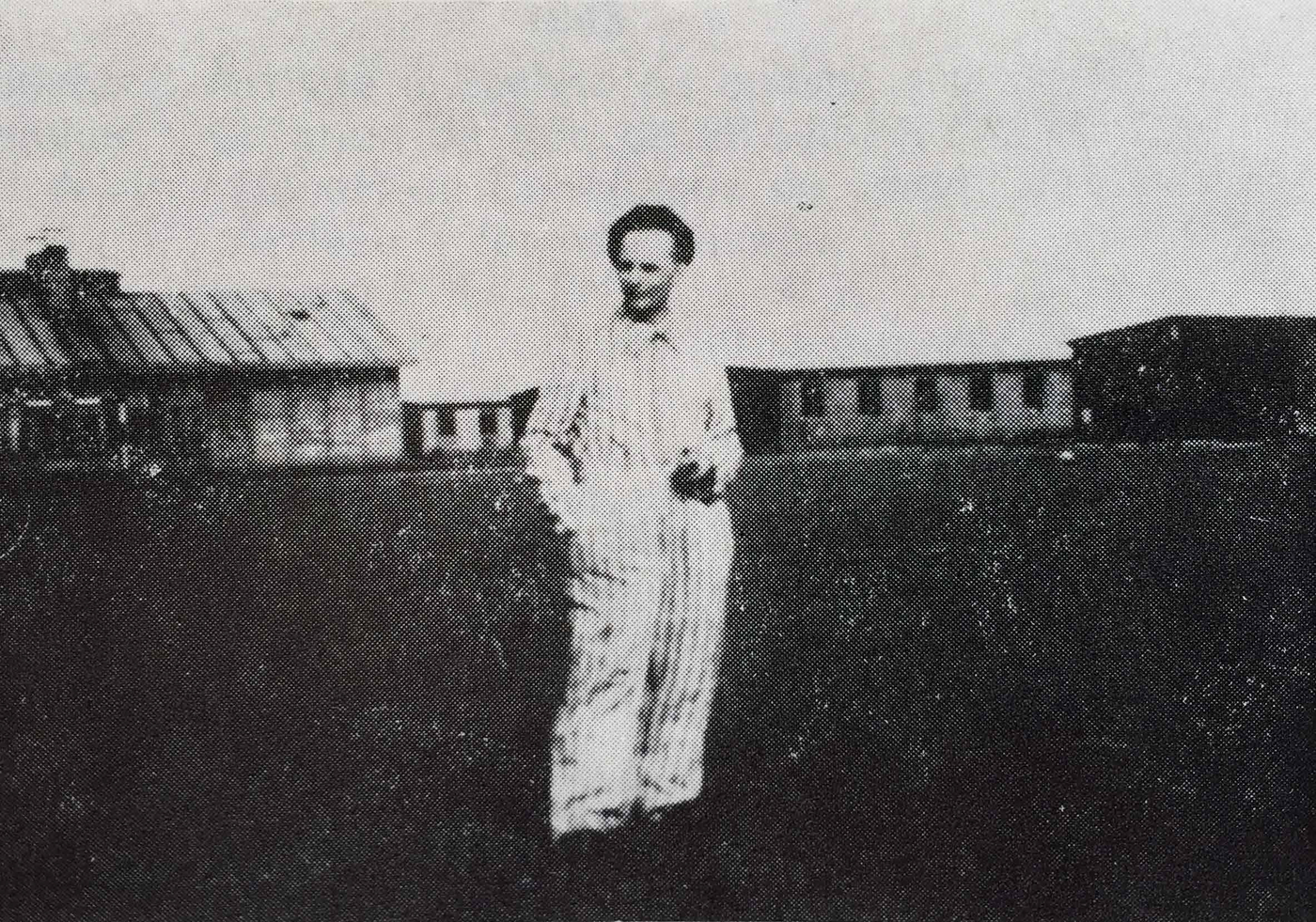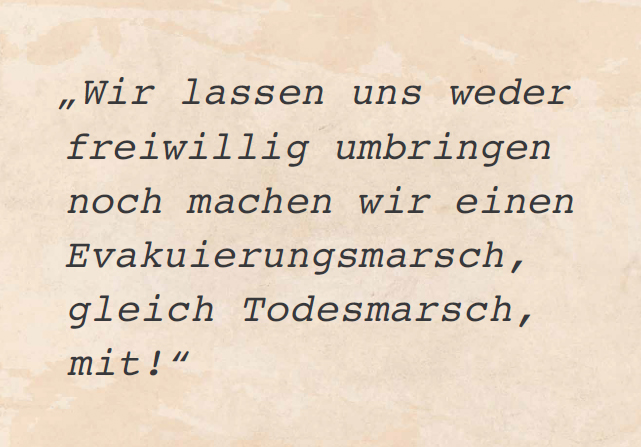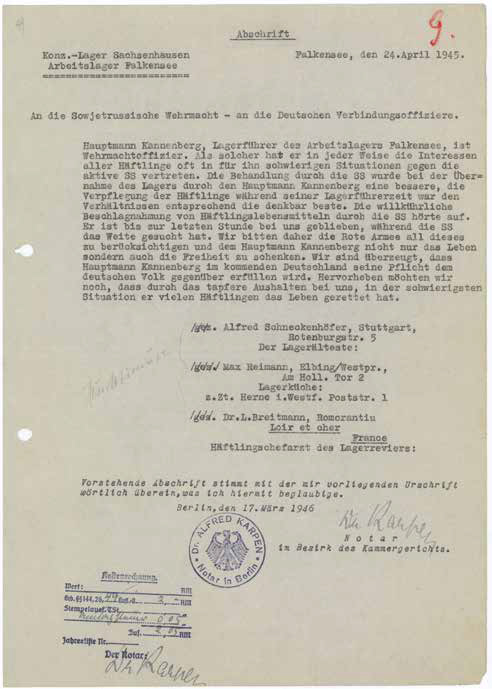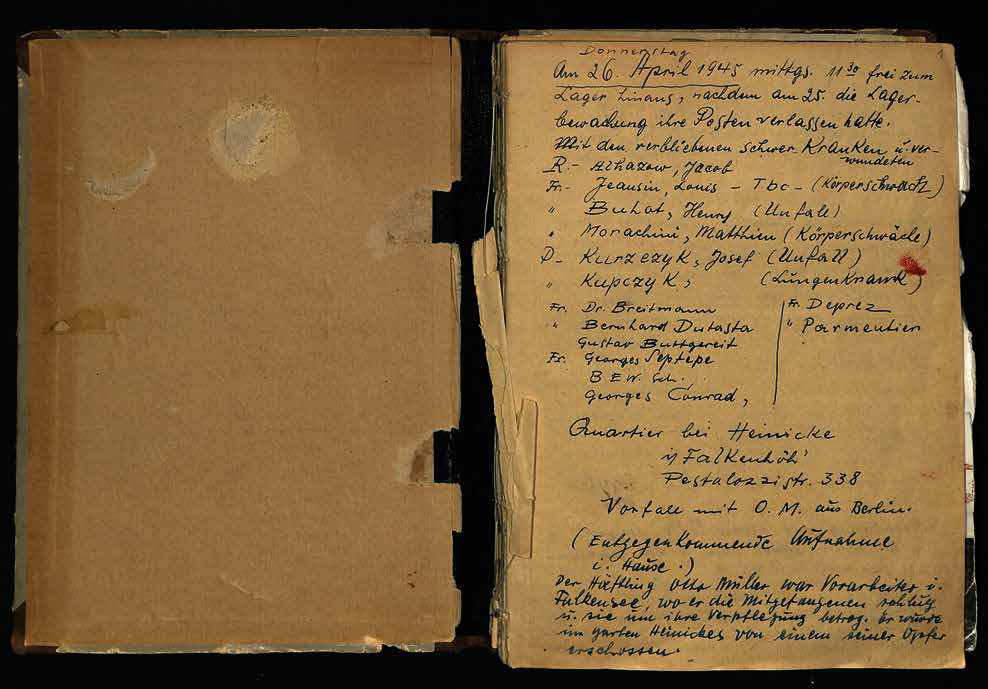To organize the concentration camps, the SS used so-called, often German, prisoner functionaries, who took on a wide variety of tasks in the camp and were supposed to implement the orders of the SS. In the course of the war, the shortage of personnel in the SS increased and the importance of these prisoners increased. Increasingly, political prisoners were placed in such positions and were thus able to exert a greater influence on camp life.
An independent illegal structure of the prisoners was the international camp committee, which was led in Falkensee first by Christian Mahler and later by Max Reimann, both German communists. In April 1945, she and her comrades-in-arms made a decisive contribution to the liberation of the camp without death or bloodshed.
When the Sachsenhausen main camp gave the order for the Falkensee camp to be closed, they convinced the commander, Ernst Kannenberg, not to evacuate the camp. Days before, the Falkensee prisoners had seen very weak, sick and suffering people in the camp who were stopping in Falkensee on their way from Lieberose to Oranienburg. The horror among the prisoners in Falkensee was great. As chairman of the camp committee, Max Reimann tried to get in touch with the Red Army so that the camp would not become a theater of war.
On April 26, 1945, the first Soviet soldiers arrived at the camp. That same day, the prisoner at the time, Bruno Schultz, began his diary: "Thursday, April 26, 1945 at noon. 11:30 a.m. free to leave the camp after the camp guards have left their posts on the 25th had left."

Source: Archive Museum Falkensee
Audio text in plain language: Camp liberation
Station audio tour: Forced communities

Source: Archive Museum Falkensee

Source: Brandenburg State Main Archive, Rep. 161, Object 4, ZB 2969
